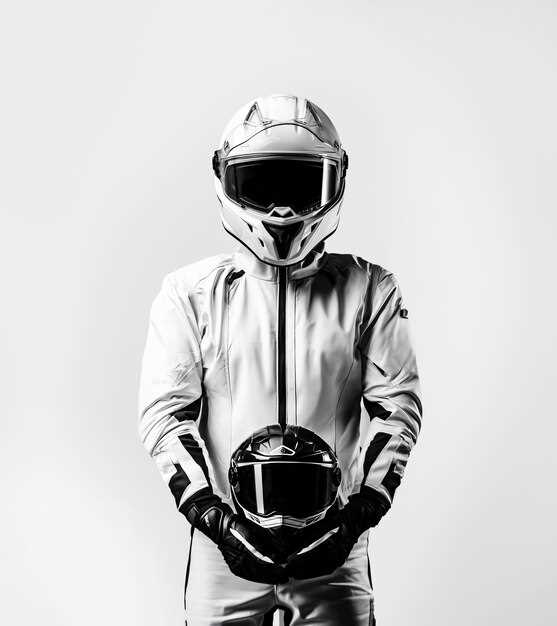
Entering the world of motorsports can be both exhilarating and daunting for new racers. With the need for speed comes the necessity for the right equipment to ensure safety, performance, and enjoyment on the track. Understanding the essential gear distinguishes an amateur racer from a dedicated competitor. This article outlines the must-have gear that every new racer should consider before hitting the tarmac.
First and foremost, personal protective equipment (PPE) is non-negotiable. A well-fitted racing helmet is the cornerstone of safety, designed to protect against head injuries during high-speed events. Look for helmets that meet recognized safety standards, including those set by the Snell Memorial Foundation. Equally important are fire-resistant suits, gloves, and shoes that not only ensure safety in the event of a fire but also enhance grip and performance on the pedals.
Beyond safety gear, the vehicle itself requires attention. New racers should invest in performance-enhancing accessories such as lightweight racing tires, which provide better traction, and a responsive steering wheel that enhances control. Additionally, a quality driving harness is essential for securing the driver firmly in place, allowing for better handling during tight turns and high speeds. These elements combine to create a race-ready setup, enabling new racers to focus on honing their skills instead of worrying about equipment failures.
Choosing the Right Helmet: Safety Standards and Fit

Selecting the right helmet is crucial for safety on the track. Helmets are designed to protect your head in the event of an accident, but not all helmets are created equal. It’s essential to understand safety standards and to find a helmet that fits properly for optimal protection.
First, familiarize yourself with safety certifications such as Snell and DOT. The Snell Foundation tests helmets to ensure they meet strict safety requirements, while the Department of Transportation (DOT) certification indicates compliance with federal safety standards. Look for helmets that carry these certifications, as they have been rigorously tested.
Another important aspect is the fit of the helmet. A helmet should fit snugly without being uncomfortably tight. To determine the right size, measure the circumference of your head just above your eyebrows and consult the manufacturer’s sizing chart. Different brands may have variations in fit, so it’s advisable to try on multiple helmets.
When trying on a helmet, wear it for a few minutes to check for hot spots or discomfort. Ensure that it stays in place when you move your head. A properly fitting helmet should not shift or slide; it should feel secure but comfortable. Remember, a helmet that doesn’t fit correctly can lead to a higher risk of injury.
Consider the type of racing you’ll be doing, as different helmets offer various features. Some helmets come with ventilation systems, which can be beneficial in keeping you cool during long races. Others may be designed for specific types of motorsport, such as open-wheel racing or karting, so ensure your helmet aligns with your racing activities.
In summary, prioritize safety certifications when choosing a helmet, and take the time to find a proper fit. A well-fitting, certified helmet can significantly enhance your safety and allow you to focus on your performance on the track.
Selecting the Best Racing Suit for Comfort and Protection

Choosing the right racing suit is crucial for both comfort and safety on the track. When selecting a racing suit, consider the following key factors: material, fit, and certification.
The material of the suit plays a significant role in both comfort and protection. Look for suits made from flame-resistant fabrics, such as Nomex or similar materials. This type of fabric provides excellent heat resistance and helps protect against fire hazards. Ensure the suit is lightweight and breathable to prevent overheating during races, particularly in hot weather conditions.
Fit is another essential aspect. A well-fitted racing suit allows for a full range of motion while driving. It should be snug enough to prevent excess fabric from interfering with seat belts and other safety gear but loose enough to ensure comfort and mobility. Many brands offer options tailored for different body types, so take the time to try on various sizes and styles to find the best match.
Certification is vital for safety. Ensure that the suit meets the regulations set by the governing bodies of motorsport, such as FIA or SFI standards. A certified suit guarantees that it has undergone rigorous testing to ensure its effectiveness in protecting against flames and extreme conditions.
Finally, consider additional features that enhance comfort and functionality, such as ventilated panels for increased airflow, reinforced stitching for durability, and pockets for storage. These details can greatly improve your racing experience, allowing you to focus on performance rather than discomfort.
Essential Racing Shoes: Enhancing Grip and Control
Choosing the right racing shoes is crucial for both performance and safety on the track. These specialized footwear options are designed to provide the grip and control necessary to navigate turns and acceleration with precision. When selecting racing shoes, consider the following features.
Grip and Traction: A key aspect of racing shoes is their sole design. Look for shoes with rubber or specialized compounds that offer superior grip. The tread pattern should be optimized for various track conditions, ensuring stability during high-speed maneuvers.
Lightweight Design: Racing requires agility, so opting for lightweight shoes enhances your overall speed. Materials such as mesh and synthetic fabrics can reduce weight while maintaining durability. A lighter shoe allows for quicker foot movement, which is vital when shifting gears or applying brakes.
Ankle Support: A well-designed racing shoe provides adequate ankle support to prevent injuries. Models that feature high tops or reinforced sides can help stabilize the ankle during lateral movements on the track. Always ensure a proper fit to avoid additional strain during races.
Breathability: Intense racing can lead to overheating. Choose shoes made from breathable materials that promote airflow, keeping your feet cool and dry. Enhanced ventilation helps maintain comfort and focus during long sessions on the track.
Custom Fit: Some racers opt for custom-fit shoes tailored to their foot shape. Brands often offer options for personalization in terms of size and arch support. This custom approach ensures maximum comfort, reducing fatigue and enhancing control.
Investing in a high-quality pair of racing shoes that integrates these essential features will significantly improve your performance on the track. Prioritize comfort, support, and grip to elevate your racing experience while minimizing the risk of injury.

